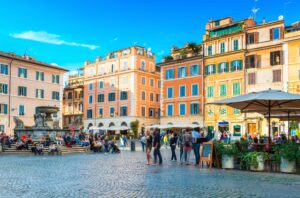Iceland, with its stunning landscapes of glaciers, volcanoes, and hot springs, is a must-visit destination. However, the best time to visit depends on your interests, weather preferences, and what you want to experience.
Let’s break down the best time to visit Iceland based on various factors.
🌦️ Understanding Iceland’s Seasons
Iceland has four distinct seasons, but its weather can be unpredictable throughout the year. Temperatures range between 30°F (-1°C) in winter to 60°F (15°C) in summer. Here’s a breakdown of the seasons and what they offer:
🌸 Spring (April to May): The Season of Renewal
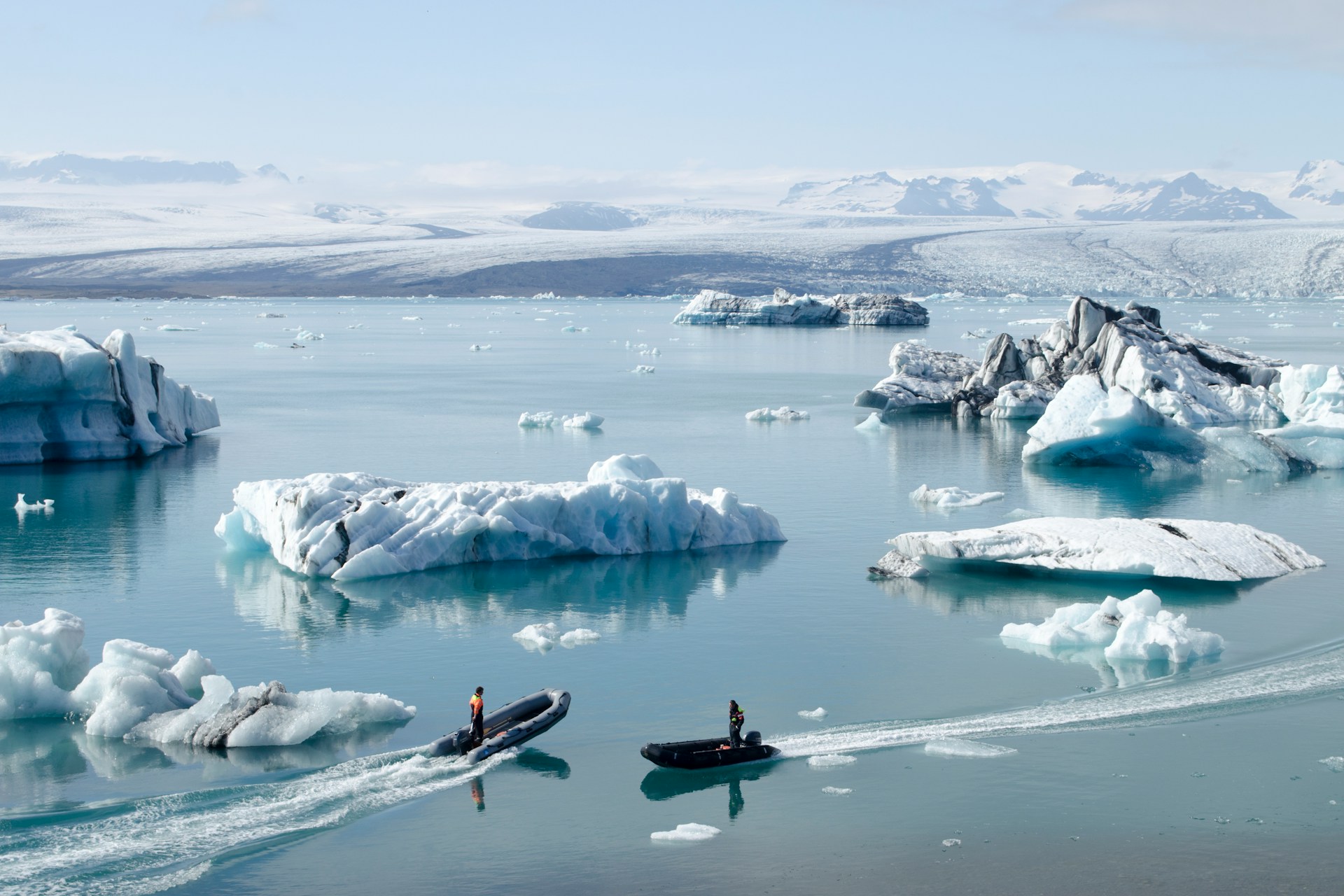
Why Visit in Spring?
Spring in Iceland, typically spanning April to May, is an underrated yet magical time to visit. The season bridges the transition from the icy grip of winter to the vibrant energy of summer, making it a unique and peaceful period to experience the country’s stunning landscapes.
- Melting Snow: Reveals hiking trails and brings waterfalls to life.
- Wildlife: Migrating birds, like Arctic terns, return, and lambing season begins.
- Shoulder Season Perks: Lower prices and fewer crowds compared to summer.
Key Activities
- Road Trips: Drive the Ring Road to see waterfalls, glaciers, and black sand beaches.
- Glacier Lagoon: Visit Jökulsárlón for stunning iceberg views.
- Hot Springs: Bask in geothermal pools while surrounded by blooming flora.
Travel Tips
- Expect mild weather but prepare for occasional rain or snow.
- Check opening times for attractions as some may still be closed.
🌞 Summer (June to August): The Midnight Sun and Warmth
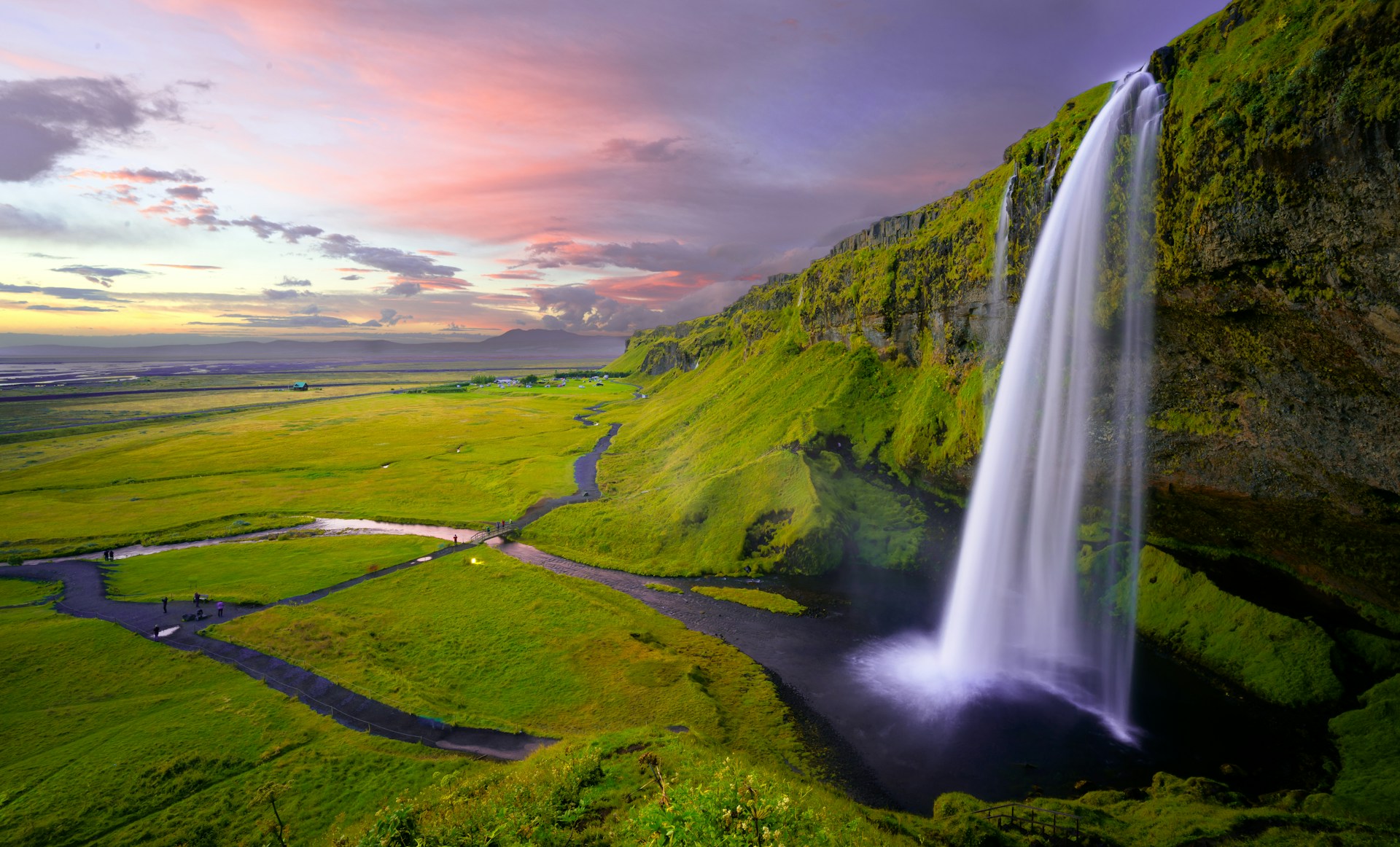
Why Visit in the Summer?
Summer in Iceland is the most popular time to visit. The weather is the warmest, with temperatures ranging from 50°F to 60°F (10°C to 15°C), although it can still be cool. The highlight of this season is the midnight sun, where the days are incredibly long—especially in June when the sun barely sets. This allows for extended sightseeing and outdoor adventures.
Popular Activities:
- Golden Circle Tour: See Þingvellir National Park, Gullfoss Waterfall, and Geysir hot springs.
- Hiking and Camping: Explore scenic trails in areas like Landmannalaugar.
- Wildlife Watching: This is the best time for whale watching and puffin spotting.
Travel Tips:
- Book accommodations early, as summer is Iceland’s peak tourist season.
- Be prepared for busy tourist sites and higher prices.
🍁 Shoulder Season (May and September): The Perfect Balance

Why Visit in the Shoulder Season?
May and September offer a balance of fewer crowds, decent weather, and more affordable travel options. This is the time when you can experience Iceland without the summer rush but still enjoy most of the outdoor activities.
Highlights of May:
- Northern Lights: Northern lights are starting to appear in late September.
- Milder Weather: Temperatures are relatively cool, but not too cold, and snow begins to melt, revealing the countryside.
- Less Crowded: Avoid the summer tourist crowds while still having access to popular sites.
Highlights of September:
- Autumn Colors: The landscape starts to change, with vibrant autumn colors in the forests.
- Northern Lights: September is the start of the Northern Lights season, making it an excellent time to visit.
- Fewer Tourists: Fewer people visit during this time, making it more peaceful.
Key Activities
- Photography: Capture the golden hues of Iceland’s landscapes.
- Horseback Riding: Ride Icelandic horses through colorful valleys.
- Local Festivals: Attend events like the Reykjavík International Film Festival.
Travel Tips:
- September can be rainy, so pack layers and waterproof gear.
- May is a good time for hiking and getting off the beaten path.
- Bring a mix of warm and waterproof clothing for changing conditions.
❄️ Winter (November to March): The Northern Lights and Snowy Wonders
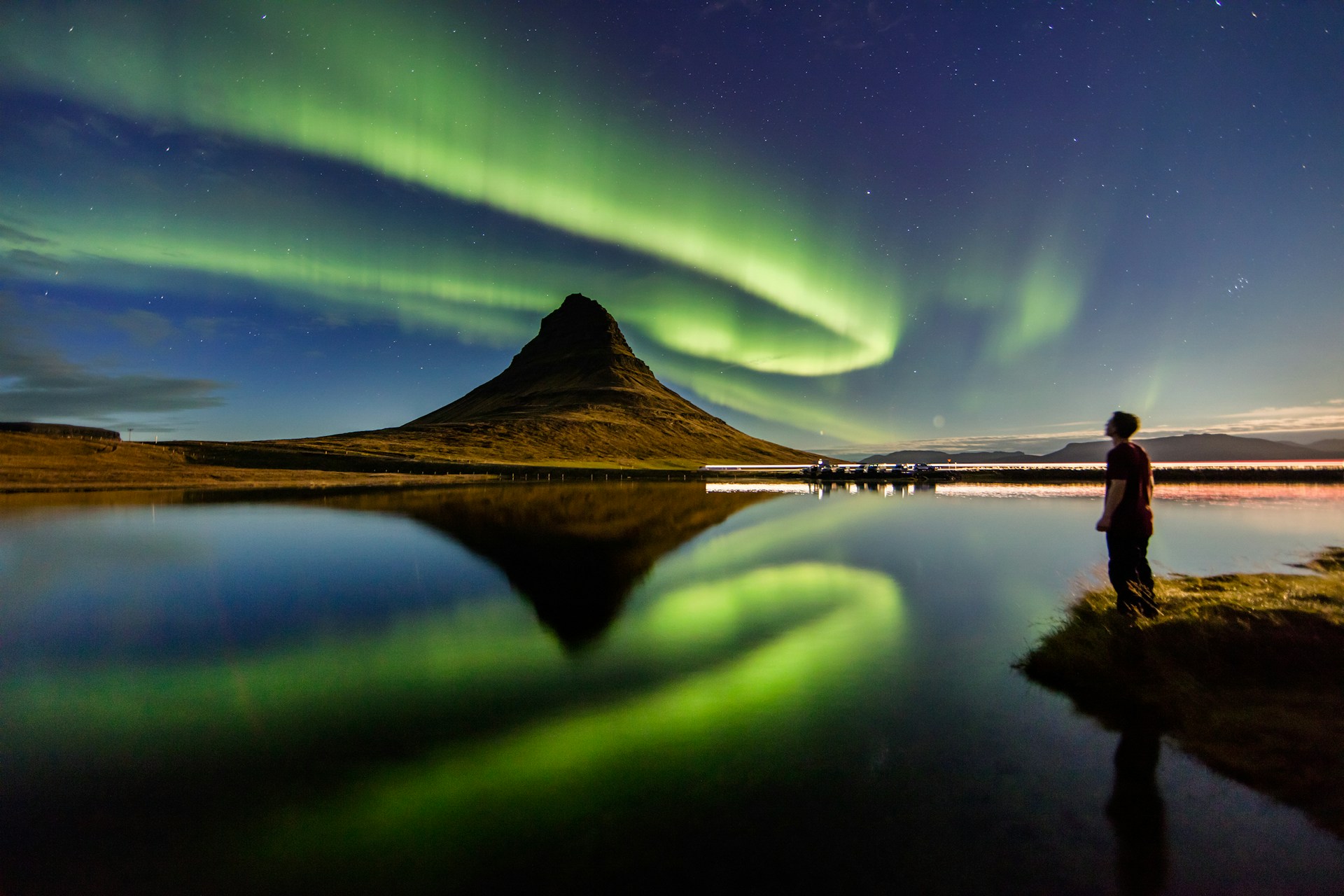
Why Visit in Winter?
For those who want to see Iceland in its winter wonderland form, the cold season (November to March) is the time to go. Although the weather can be harsh with temperatures averaging from 25°F to 35°F (-4°C to 2°C), the winter season offers magical experiences that you can’t get at any other time of year.
Top Experiences in Winter:
- Northern Lights: The long, dark nights are ideal for viewing the aurora borealis, especially in January and February.
- Ice Caves and Glaciers: Explore the crystal-clear ice caves and walk on glaciers.
- Hot Springs: Warm up in famous geothermal hot springs like the Blue Lagoon.
- Festive Atmosphere: Enjoy Icelandic traditions like Christmas markets and Þorrablót, a midwinter feast.
Travel Tips:
- Be prepared for snowstorms and shorter days, with only 4–5 hours of daylight.
- Many roads, especially in the north, can be closed due to snow, so check road conditions frequently.
- Dress in warm layers, and bring sturdy boots and gear for the snow.
🌦️ What’s the Best Time for Northern Lights?
If seeing the Northern Lights is at the top of your bucket list, the winter months are your best bet. From September to March, Iceland offers the best opportunities to witness this stunning natural phenomenon, with the longest nights and the darkest skies. The optimal months are October to March, but the best months tend to be January and February for a higher chance of clear skies and intense auroras.
🌍 Best Time for Outdoor Activities
Iceland is known for its outdoor adventures, and the best time to enjoy these activities depends on the season:
- Summer: Ideal for hiking, biking, and road trips. The long days give you more time to explore, and the weather is the most pleasant for activities like swimming in hot springs.
- Winter: For those who love winter sports, including snowshoeing, ice climbing, and skiing, winter is the best time to visit.
- Shoulder Season (May and September): Great for whale watching, exploring waterfalls, and enjoying the changing landscape.
🗓️ Key Seasonal Highlights
Best Time for Northern Lights
- September to March: Dark nights provide ideal conditions for aurora sightings.
Best Time for Midnight Sun
- June to July: Almost 24 hours of daylight for non-stop exploration.
Best Time for Hiking
- July to August: Trails are snow-free, and the weather is stable.
Best Time for Budget Travel
- Spring (April to May) and Autumn (September to October): Shoulder seasons offer lower prices and fewer crowds.
📅 Festivals and Events
Iceland’s festivals reflect the country’s unique culture, and each season offers something special:
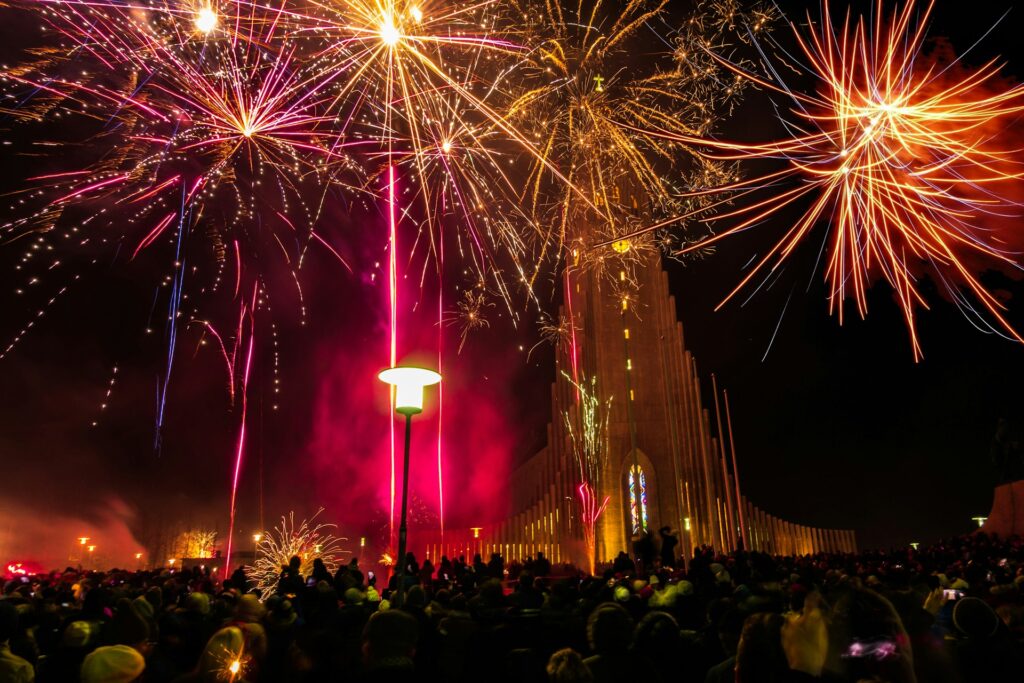
Summer (June to August):
- Secret Solstice Festival (June): A music festival that takes advantage of the midnight sun.
- Icelandic National Day (June 17th): Celebrations in Reykjavik with parades and festivities.
Shoulder Season (May and September):
- Iceland Airwaves (November): An eclectic music festival in Reykjavik.
- Reykjavik International Film Festival (September): For film enthusiasts.
Winter (November to March):
- Christmas Markets (December): A festive atmosphere in Reykjavik, with local crafts and foods.
- New Year’s Eve Celebrations (December 31): The streets light up with fireworks across the country.
🗺️ Regional Variations in Weather
Iceland’s weather can vary greatly depending on the region:
- Reykjavik and the South Coast: Milder winters and warmer summers, ideal for tourists year-round.
- North Iceland: Colder winters with snow, and slightly warmer summers. Expect fewer tourists in winter, but many activities are closed.
- Westfjords: The most remote and hardest-to-reach area, with unpredictable weather and fewer tourists. It’s best visited in summer.
🌐 Resources for Planning Your Trip
To keep track of the weather and plan accordingly, check these reliable sources:
- Icelandic Weather Services: Icelandic Met Office
- Travel Updates and Road Conditions: Road.is
- Northern Lights Forecast: Aurora Forecast
🎒 Packing Tips for Every Season

Summer Essentials
- Lightweight layers for sunny days.
- Sunglasses and sunscreen for the bright sun.
- Waterproof jacket for unexpected rain.
Winter Must-Haves
- Thermal layers and insulated jackets.
- Waterproof boots with good grip.
- Hats, gloves, and scarves for icy winds.
Driving Safety
- In winter, opt for a 4×4 vehicle and check road conditions daily.
Accommodation
- Book ahead in summer and during festive seasons like Christmas.
Conclusion
Iceland offers breathtaking experiences year-round, but the best time to visit depends on your interests. Whether you’re chasing the northern lights in winter, hiking under the midnight sun in summer, or enjoying autumn tranquility, Iceland’s natural wonders never disappoint. With careful planning and seasonal insights, your Icelandic adventure will be unforgettable.
Also Read This:
- Best Time to Visit Switzerland | An In-Depth Guide for Every Traveler
- Best Time to Visit Italy | A Month-by-Month Journey Through La Bella Vita
- Best Time to Visit Scotland | A Guide to the Scottish Highlands
- Best Time to Visit Rome: Unlocking the Eternal City’s Charms
- Best Time to Visit Costa Rica | A Comprehensive Seasonal Guide
- Best Time To Visit Hawaii | The Ultimate Guide You need
- Best Time to Visit Barcelona: Ultimate Guide to Exploring Spain’s Vibrant City
- Best Time to Visit Japan: A Detailed Seasonal Guide
- 30 Stunning Things to Do in Malta | The Ultimate Traveler’s Guide
- Things To Do in Barcelona Bound: A Local’s Guide to the Best Things to Do
- 4 Day Barcelona Itinerary: Immerse Yourself in Culture and History




